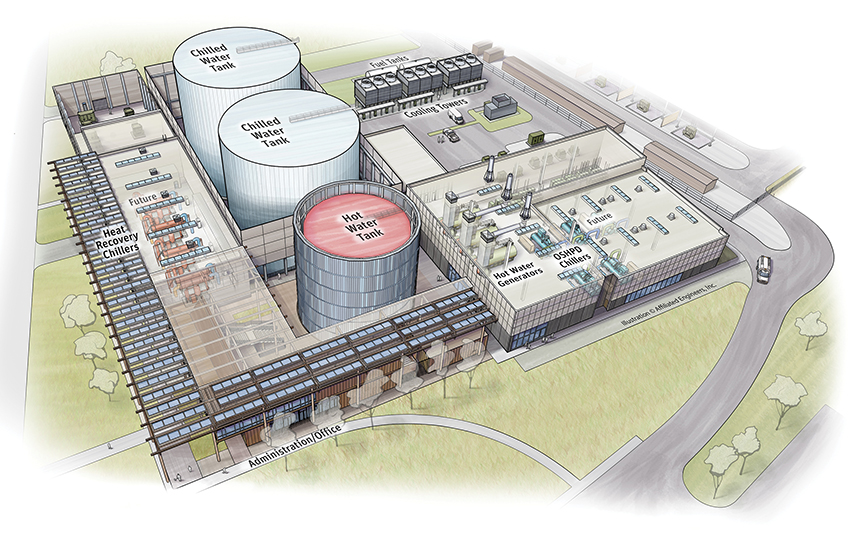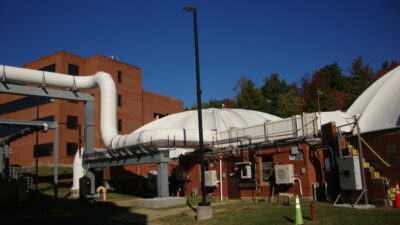A fourth-generation utility plant at Stanford University meets 88% of the campus and university hospital’s demand

The energy system of the future at Stanford University is a prime example of a fourth-generation utility system with energy storage. The Stanford Energy System Innovations project includes a central energy facility comprised of heat recovery chillers and thermal energy storage.
Designed for a peak load of 28,000 tons of cooling and 350 MMBtu/hour heating, the new systems replace a fossil fuel combined heat and power plant with electric drive heat recovery chillers that — along with standard chillers and gas-fired hot water generators — capitalize on daily heating and cooling overlap to meet 88% of the campus and university hospital heating demand with recovered waste heat.
Two million gallons of hot water and 10 million gallons of chilled water thermal energy storage provide load shifting to off-peak electric rates and accommodate high–demand periods. Together they balance heating and cooling loads with the heat recovery chillers.
SESI is 70% more efficient than the previous system, reducing carbon emissions by 75% and potable water use by 60%. A new 100 megavolt-ampere, 60 kilovolt:12.47 kilovolt substation allows flexible management of Stanford’s energy supply platform, 65% of which is derived from renewable sources. The energy supply, storage and distribution system is a testimony to the vision and values of a world-leading university committed to sustainable planning and living.



